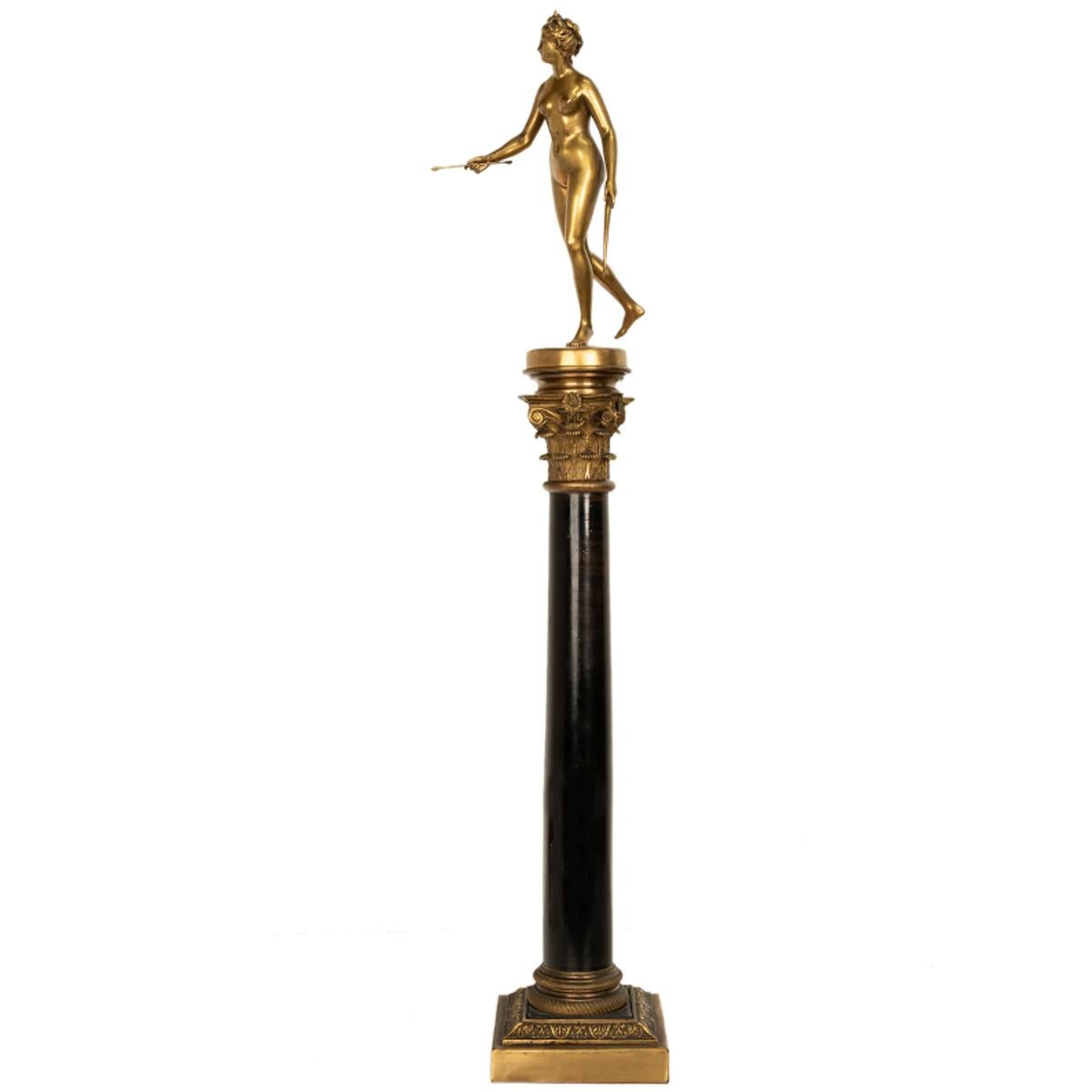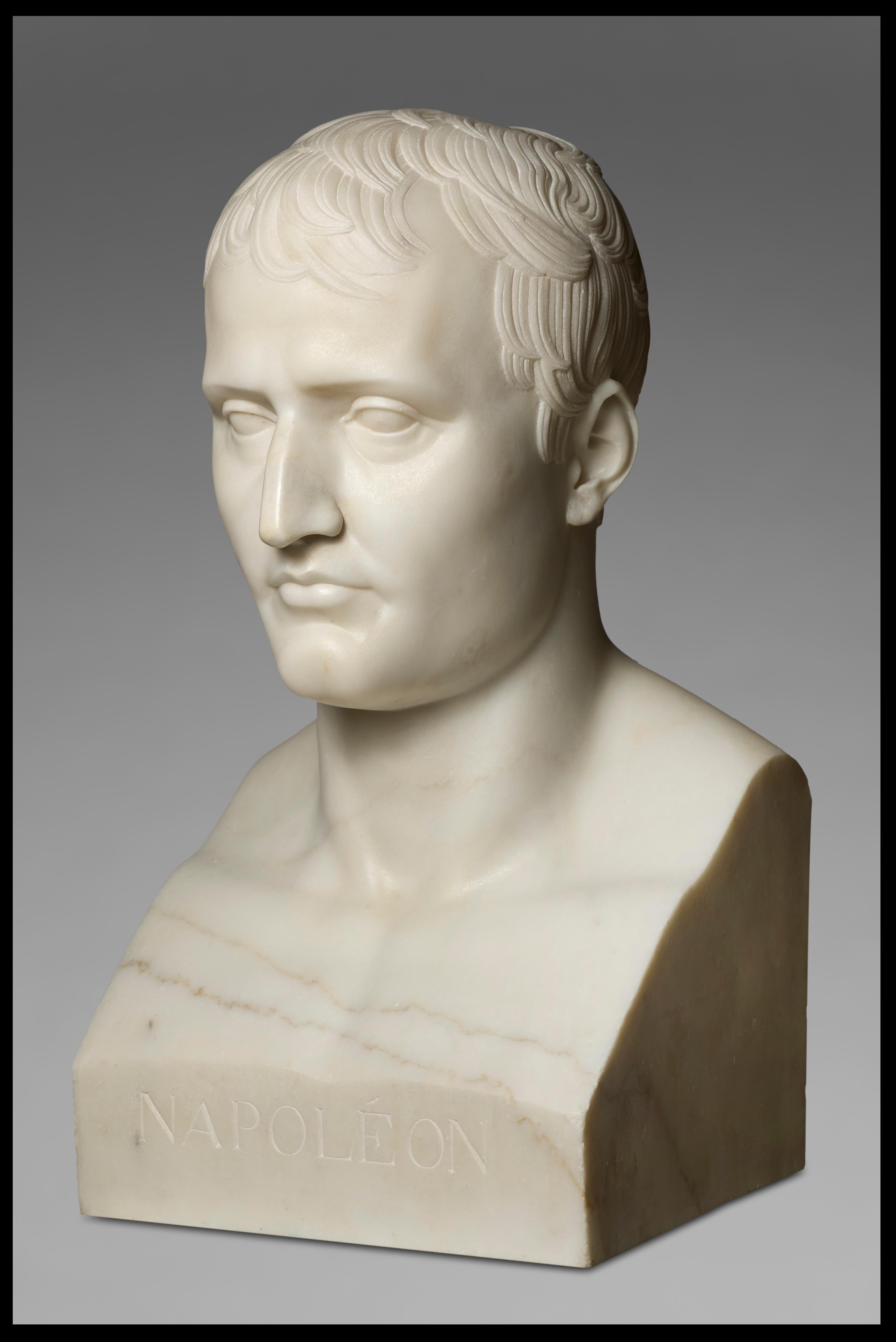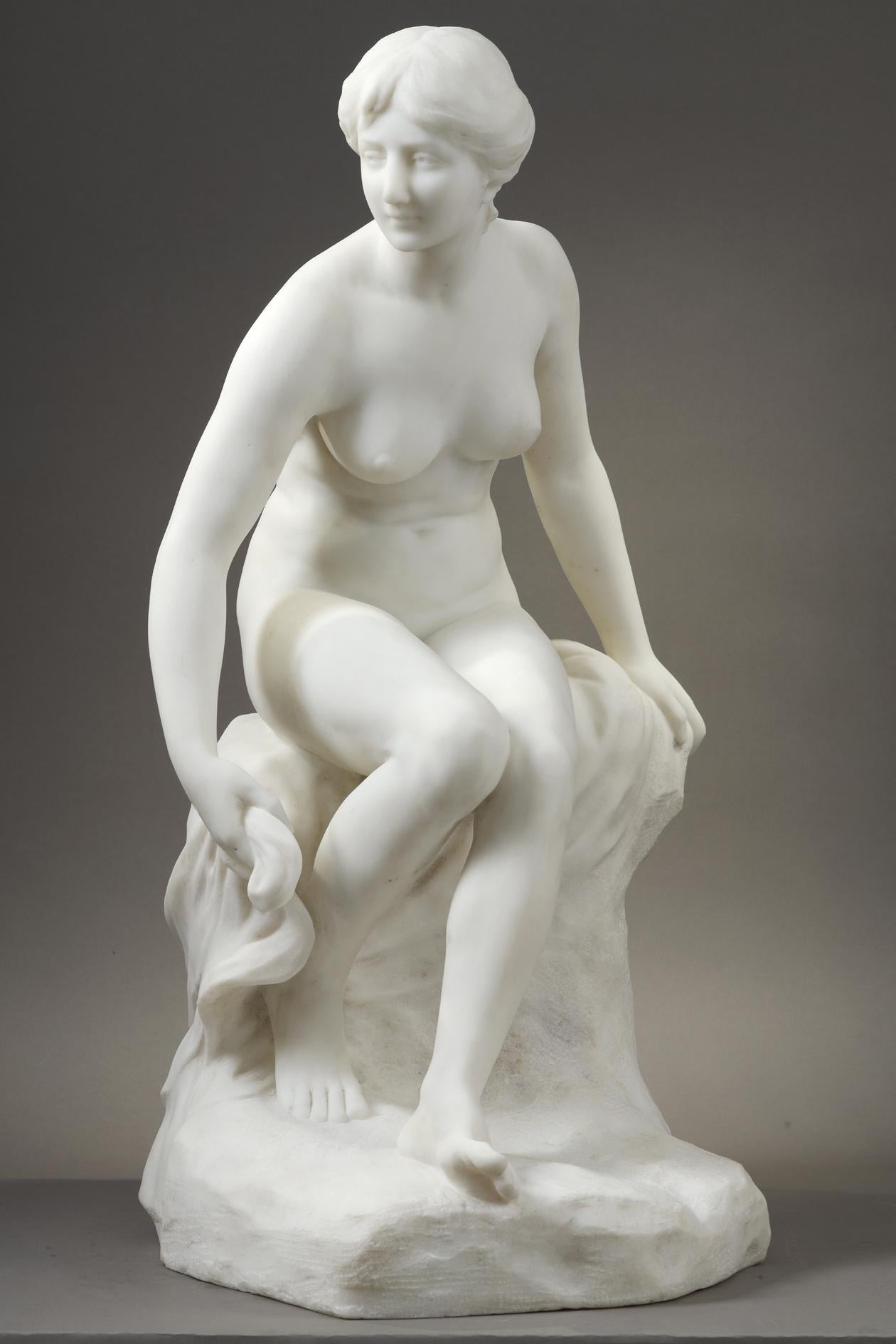Albert-Ernest Carrier-BelleuseThe Springcirca 1870
circa 1870
About the Item
- Creator:Albert-Ernest Carrier-Belleuse (1824 - 1887, French)
- Creation Year:circa 1870
- Dimensions:Height: 30.12 in (76.5 cm)Width: 11.82 in (30 cm)Depth: 9.45 in (24 cm)
- Medium:
- Movement & Style:
- Period:
- Condition:
- Gallery Location:PARIS, FR
- Reference Number:
Albert-Ernest Carrier-Belleuse
Albert-Ernest Carrier-Belleuse was a French sculptor. Carrier-Belleuse was born on 12th June 1824 at Anizy-le-Château, Aisne, France. He began his training as a goldsmith's apprentice. He was a student of David d'Angers and briefly studied at the École des Beaux-Arts. His career is distinguished by his versatility and his work outside France, in England between 1850–55 and in Brussels around 1871. His name is perhaps best known because Auguste Rodin worked as his assistant between 1864 and 1870. The two traveled to Brussels in 1871 and by some accounts, Rodin assisted Carrier-Belleuse's architectural sculpture for the Brussels Stock Exchange.

- ShippingRetrieving quote...Ships From: PARIS, France
- Return PolicyA return for this item may be initiated within 3 days of delivery.
- BatherLocated in PARIS, FRBather by Etienne Hachenburger (19th-20th C.) Sculpture in white Carrara marble Signed on the side of the base "E. Hachenburger" A simiilar model was exhibited at the Paris Salon oh...Category
Early 1900s French School Nude Sculptures
MaterialsMarble
- Portrait of Prince ImpérialLocated in PARIS, FRPortrait of Prince Impérial Louis-Napoléon Bonaparte (1856-1879), son of Emperor Napoléon III by Prosper D'EPINAY (1836-1914) A rare and very fine portrait sculpted in white Carrara...Category
1880s French School Figurative Sculptures
MaterialsMarble
- DucksLocated in PARIS, FRDucks by Josette HEBERT-COEFFIN (1906-1973) Sculpture made in stone signed on the base "J. H. Coëffin" France circa 1930 height 10 cm width 16,5 cm depth 14,1 cm Biography : Jose...Category
1930s French School Figurative Sculptures
MaterialsLimestone
- Portrait of Albert DubarryLocated in PARIS, FRPortrait of Albert Dubarry by Léon-Ernest DRIVIER (1878-1951) Bronze with a nuanced greenish dark brown patina signed "Drivier" cast by "Montagutelli, Paris, cire perdue" (with the ...Category
1930s French School Figurative Sculptures
MaterialsBronze
- Bear BagpiperBy Christophe FratinLocated in PARIS, FRBear Bagpiper by Christophe FRATIN (1801-1864) Bronze with nuanced dark brown patina Signed on the base "Fratin" Old edition cast France mid-19th century height 10,5 cm Biography ...Category
Mid-19th Century French School Figurative Sculptures
MaterialsBronze
- Winged VictoryLocated in PARIS, FRSculpture in bronze with a nuanced greenish brown patina Signed " F. Sicard " on the base With the foundry stamp " Fumière et Cie Sucrs, Thiébaut Fres, Paris " Stands on its original green marble base With a dedication to the wellknown French chef Edouard Nignon : "A Mr Nignon, ses fournisseurs. En souvenir de son élévation au grade de Chevalier dans la Légion d'Honneur. Paris le 7 mai 1921" France cast around 1920 height 100 cm Biography : François-Léon Sicard (1862-1934), known as François Sicard, was a French sculptor. Originally from Tours, he obtained a municipal grant to study at the Fine arts Schoool in Paris. He learned sculpture there under the direction of Jules Cavelier and Louis-Ernest Barrias and became a laureate of the Prix de Rome in 1891. As a resident of the Villa Medici in Rome from 1892 to 1895, he befriended Adolphe Déchenaud who painted his portrait. His career earned him numerous public and private commissions and Sicard received various awards at fairs and exhibitions, including the medal of honor at the 1900 World's Fair and the medal of honor at the 1905 Salon. Having become a professor at the School of Fine Arts in Paris, François Sicard was elected member of the Institute in 1924 and president of the Fine arts Academy in 1930. He was the appointed sculptor of Georges Clemenceau, of whom he sculpted the bust, the group statue of Sainte-Hermine, and which commanded him the Minerva in blond Egyptian stone...Category
1910s French School Figurative Sculptures
MaterialsBronze
- Antique French Grand Tour Gilt Bronze Statue on Column Diana the Huntress 1838By Ferdinand BarbedienneLocated in Portland, ORA fine & large (34" tall) antique French gilt-bronze on marble column of Diana, cast by Ferdinand Barbedienne (1810-1892) after a statue by Jean Antoine Houdon (1741-1828), the bronz...Category
1830s French School Figurative Sculptures
MaterialsMarble, Bronze
- Napoleon IstLocated in Paris, FRAntoine-Denis CHAUDET (1763 - 1810) NAPOLEON Ist, circa 1808 Carrare Marble - First Empire Hermes Bust of Napoleon Ist, after Antoine-Denis CHAUDET Dimen...Category
Early 1800s French School Figurative Sculptures
MaterialsMarble
- RhinoBy Roland d'Andlau-HombourgLocated in Greenwich, CTBronze "Rhinoceros' by Roland d' Andlau-Hombourg (1927-2009) signed, numbered 1/6 with Godard foundry stamp R. d' Andlau was a gifted 'animalier' sculptor in the grand tradition ...Category
1950s French School Figurative Sculptures
MaterialsBronze
- Tusey Foundry, "Polyhymnia," Imposing Cast Iron Sculpture 19th centuryLocated in Pistoia, ITImpressive cast iron sculpture titled "Polymnie," Tusey Foundry, late 19th century. In modern times Tusey, a village in the Meuse, was best known for its renowned foundry. The found...Category
1890s French School Figurative Sculptures
MaterialsIron
- L'AiglonBy Louis OuryLocated in Paris, FRLouis Oury (1867 - 1940) L’Aiglon, 1899 Terracotta with polychromatic patina Signed on the shoulder and Seal from Goldscheider on the reverse Dimensions : 65 x 40 x 30 cm (25 x 15 3/...Category
19th Century French School Figurative Sculptures
MaterialsTerracotta
- Antique Silvered Bronze Rooster, France circa 19th CenturyLocated in SANTA FE, NMAntique Silvered Bronze Rooster France, circa 1900 10 1/4 x 9 1/2 (H x D) inches A very fine and lively bronze statuette of a preening Rooster. Nicely cast and well-carved and in ex...Category
19th Century French School Figurative Sculptures
MaterialsSilver, Bronze



